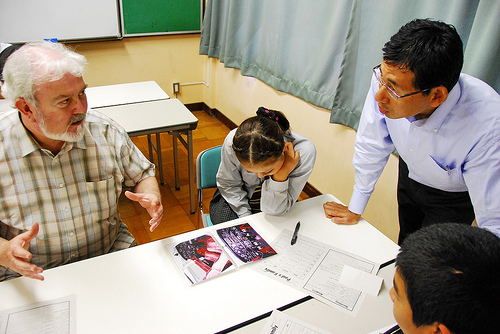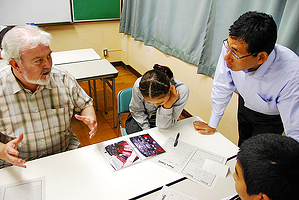7 Things Teachers Need to Know About the SAT

 As a teacher, education coordinator or administrator, you’re responsible for making sure that students are prepared for college at the end of their four year tenure with your school. In addition to providing the right classroom experience, you’ll also be around to support their preparation for the SAT.
As a teacher, education coordinator or administrator, you’re responsible for making sure that students are prepared for college at the end of their four year tenure with your school. In addition to providing the right classroom experience, you’ll also be around to support their preparation for the SAT.
Colleges use the SAT to help them assess a student’s readiness to adapt to a college environment. The SAT test is used as a benchmark that shows what a student can accomplish. In conjunction with their high school transcripts, SAT scores paint a complete picture of a student’s capabilities.
As part of a student’s “college prep team,” it’s important that you understand how the SAT functions and what it means for your students. Here are seven things you need to know about the test’s goals and its format.
- The SAT tests general knowledge and ability to solve problems creatively. It doesn’t test broad subject knowledge. For example, students won’t need to known the date of the Magna Carta but they will need to know appropriate math concepts so they can solve problems. Subject knowledge is helpful to students only when it is incorporated into solving problems.
- The SAT focuses on skills that will be essential for success at a competitive liberal-arts school. The areas include writing ability, critical reading, and the ability to solve mathematical problems. It also is a good reflection of how well students will be able to reason under pressure.
- SATs are necessary because each school has slightly different methods for issuing grades. Since classroom grades aren’t objective, colleges need a “third party” source for determining college readiness. The SAT provides that standardization.
- The SAT has three sections – Critical Reading, Writing and Math. Each of these three sections is scored based on a scale of 200 to 800.
- The Writing section includes multiple-choice questions on grammar and word usage. It also has a 25 minute essay that students will handwrite in response to a prompt. In addition to the essay, there are two other sections on the Writing test. One is 25 minutes and includes improving sentences, identifying sentence errors and improving paragraphs questions. The final section is 10 minutes and has improving sentences questions. The multiple-choice portion of the SAT counts for 70 percent of their total writing score and the essay counts for the remaining 30 percent. The writing section is the newest addition to the test (it was first administered in 2005).
- The Critical Reading section was formerly called the verbal section. It consists of short reading passages and longer reading passages. Students will have to read through the paragraphs and answer questions specific to their reading. The analogies portion of the test, which was an SAT standard for decades, has been removed. The questions consist of sentence completion questions and reading questions. There are three sections on the Critical Reading section – two 25 minute sections and one 20 minute section. Each section has a mix of the different question types.
- The Math section has two question types and three timed sections. There are four major math topics on the test – numbers and operations, algebra 1 and 2, geometry, data analysis, statistics and probability. Students will need to answer questions in these major math areas. The first math section has all multiple-choice questions, the second has eight multiple-choice and 10 “grid-in” questions and the third has all multiple-choice questions.
Knowing the facts about the SAT can help you prepare students and assist them for the road ahead. Whether you’re a classroom teacher, education coordinator or administrator, you can be an important resource for high school sophomores and juniors who are facing the test.
Photo by Paul Synott


